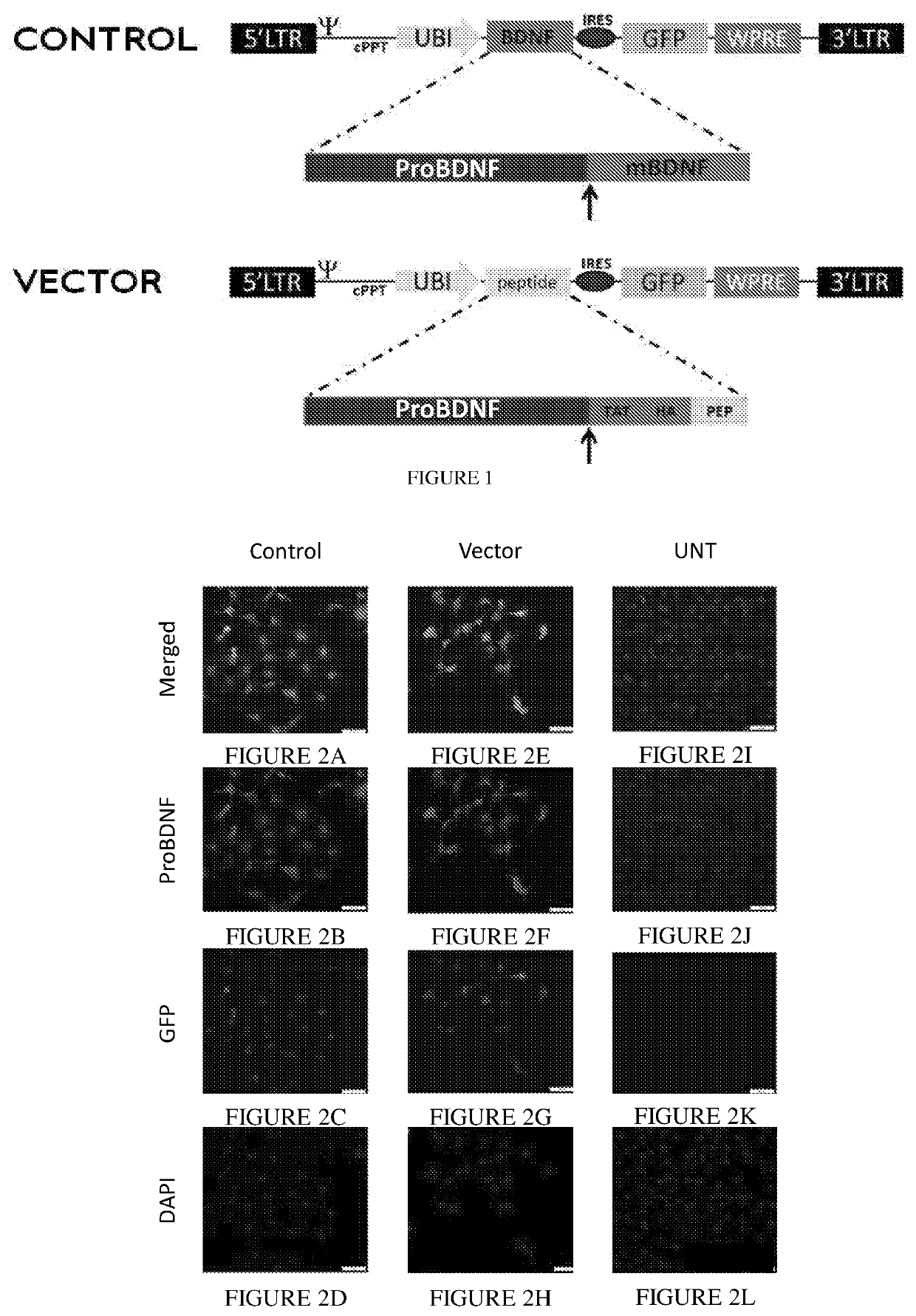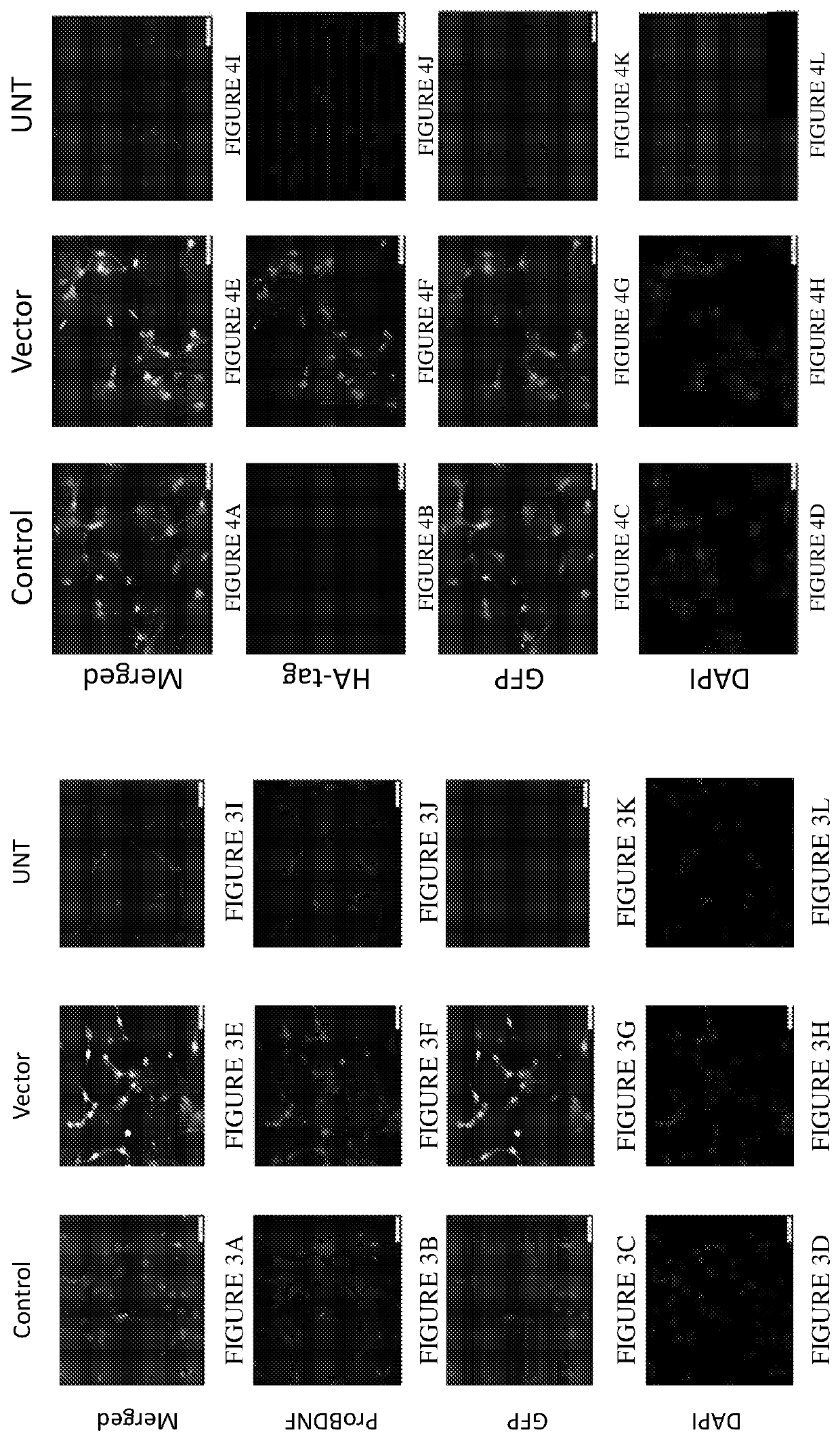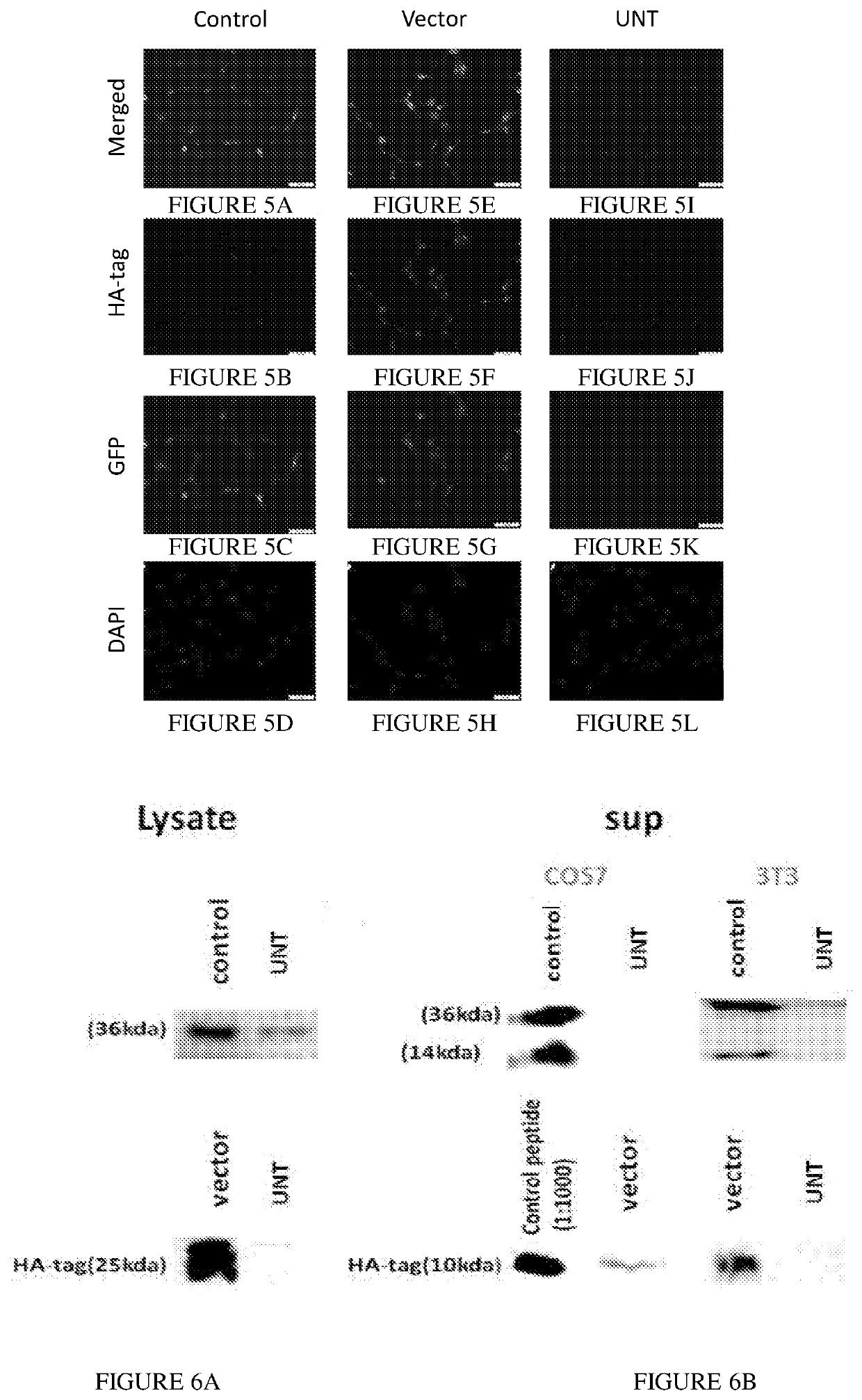Compositions and methods for delivery and expression of small inhibitory peptides and use thereof
a technology of inhibitory peptides and compositions, applied in the direction of peptide sources, peptide/protein ingredients, drug compositions, etc., can solve the problems of high susceptibility to degradation, short half-life and fast elimination, and tendency to aggregation
- Summary
- Abstract
- Description
- Claims
- Application Information
AI Technical Summary
Benefits of technology
Problems solved by technology
Method used
Image
Examples
example 1
Design of a LV Construct for Viral-Mediated Small Inhibitory Peptide Expression
[0172]As small peptides suffer from low bioavailability, the inventors have utilized the lentiviral (LV) expression system in order to both deliver and endogenously express small peptides. It is well established that peptides are continuously produced by cells from large precursors that undergo specified biogenesis, the inventors thus chose a strategy by which LV mediated expression of a specific, large and natural precursor will facilitate artificial small peptide expression while exploiting the endogenous biogenesis machinery. Accordingly, the inventors designed a transgene expressing the large BDNF precursor which includes the pre and pro-BDNF domains. The mature BDNF sequence was replaced with a peptide construct which includes a cell penetrating motif, a HA-tag for detection, and a peptide sequence (FIG. 1; ‘TAT-HA-PEP’). The inventors' hypothesis was that the generated transgene will undergo proteol...
example 2
Viral Infection of COS-7 and 3T3 / NIH Cell Lines Increased BDNF Expression
[0173]In order to test the above described system, the inventors selected COS-7 (African green monkey kidney fibroblast-like cell line) and 3T3 / NIH (Mouse embryo fibroblast) cell lines, as both are known in the literature to endogenously express, properly produce, and secrete active mature BDNF. As a preliminary validation, the inventors examined endogenous BDNF expression, of both BDNF and the propeptide ‘TAT-HA-PEP’, following viral infection. To do so, the inventors used an immunofluorescent assay using a specific antibody targeted at the proBDNF domain. Since the proBDNF sequence was present in both viral vectors, the inventors decided to use the anti proBDNF antibody rather than an anti BDNF antibody. Uninfected COS-7 (FIG. 2) and 3T3 / NIH (FIG. 3) cells were shown to express BDNF precursor endogenously, however, the expression is further increased following the mentioned above viral infection.
example 3
Infected COS-7 and 3T3 / NIH Cells Expressed a Peptide Construct
[0174]Next, the inventors determined and validated whether the peptide precursor expressed in infected COS-7 and 3T3 / NIH cells was the ‘TAT-HA-PEP’ propeptide. Accordingly, the inventors used an HA-tag antibody. Indeed, the presence of the peptide precursor was only detected in the propeptide LV infected COS-7 (FIG. 4) and 3T3 / NIH (FIG. 5) cells. Nonetheless, whether the artificial peptide precursor undergoes the relevant proteolytic cleavage and biogenesis, which will result in small peptide production within the cells, was yet to be determined.
PUM
 Login to View More
Login to View More Abstract
Description
Claims
Application Information
 Login to View More
Login to View More - R&D
- Intellectual Property
- Life Sciences
- Materials
- Tech Scout
- Unparalleled Data Quality
- Higher Quality Content
- 60% Fewer Hallucinations
Browse by: Latest US Patents, China's latest patents, Technical Efficacy Thesaurus, Application Domain, Technology Topic, Popular Technical Reports.
© 2025 PatSnap. All rights reserved.Legal|Privacy policy|Modern Slavery Act Transparency Statement|Sitemap|About US| Contact US: help@patsnap.com



